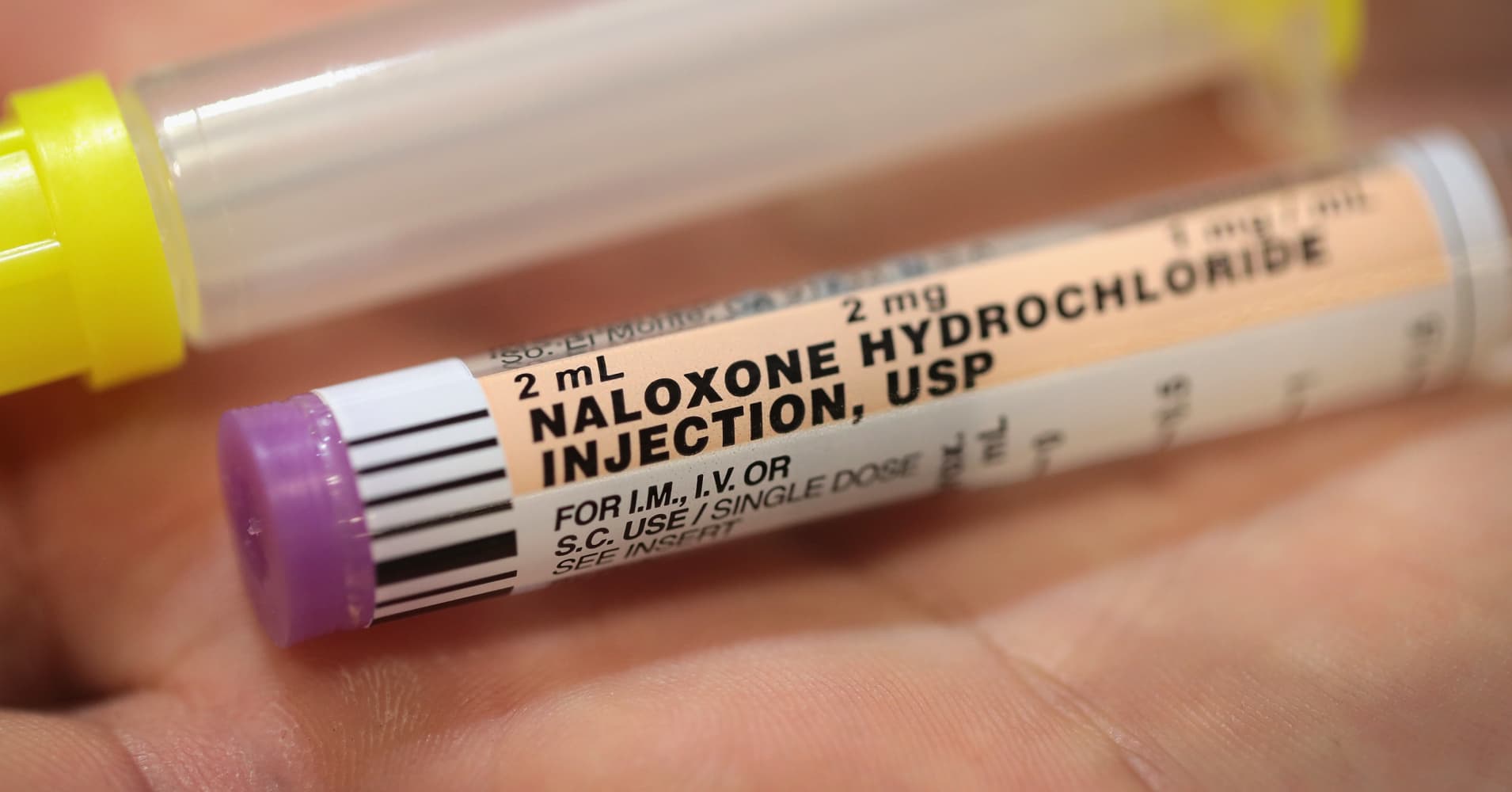From CNBC
Angelica LaVito
FDA clears the way to increase access and lower cost of life-saving opioid overdose treatment drug
- Naloxone is used in emergency rooms across the U.S. to reverse a drug overdose from opioids.
- The FDA is streamlining the labeling for naloxone.
- The change clears the way for drugmakers to sell it without a prescription.
The Food and Drug Administration is clearing the way for drug companies to increase access and lower the cost of a life-saving drug used to treat opioid overdoses.

The FDA said Thursday it is streamlining the labeling for naloxone, a prescription drug that can reverse an opioid overdose if caught early enough. The change will enable drugmakers to produce over-the-counter versions of the medication that some have criticized as prohibitively expensive and difficult to buy.
“Naloxone is a critical drug to help reduce opioid overdose deaths,” FDA Commissioner Scott Gottlieb said in a statement. “Prevention and treatment of opioid overdose is an urgent priority. Increased availability of naloxone for emergency treatment of overdoses is an important step.”
Naloxone, sold as an injection or nasal spray, is used in emergency rooms across the U.S. to reverse the symptoms of a drug overdose from opioids like heroin or prescription pain medications Vicodin, fentanyl, OxyContin and Percocet. It binds itself to opioid receptors in the brain, thereby blocking the drugs and stopping an overdose within two to five minutes.
Naloxone maker Kaleo has an injection treatment called Evzio that has a list price of $4,100. The company plans to release a generic version of Evzio with a retail price of $178 for a two pack this year. A two-pack of Narcan, a naloxone nasal spray, has a retail price of about $125. Generic naloxone costs about $40 per dose.
The FDA is trying to lower the cost even more and increase consumer access by creating easy-to-understand labels the industry can use as a template for over-the-counter versions that can be sold at pharmacies without a prescription.
Opioids were involved in 47,600 overdose deaths in 2017, accounting for about 68 percent of such fatalities, according to the Centers for Disease Control and Prevention. Americans are now more likely to die from accidental opioid overdoses than car crashes, according to the National Safety Council.
Surgeon General Jerome Adams recommended in April that people who know someone at risk for opioid overdoses should carry naloxone. Pharmacies have started selling it without a prescription, but some people haven’t been able to find it in stores or afford the treatment.
Pharmaceutical manufacturers that want to take a drug that’s already approved for prescription use and make it available over the counter must first develop a label that’s easy for consumers to understand. Drugmakers must also conduct studies to prove consumers can understand how to use the products without a doctor’s supervision.
The FDA created two model labels — for a nasal spray and for an auto-injector. The labels use pictograms to show people how to use the products. The agency also hired an independent research contractor to study more than 700 people who might use naloxone if they use heroin or a friend uses prescription opioids.
Companies can use the labels FDA created and tweak them as necessary.
“I personally urge companies to take notice of this pathway that FDA has opened for them and come to the agency with applications as soon as possible,” Gottlieb said.
